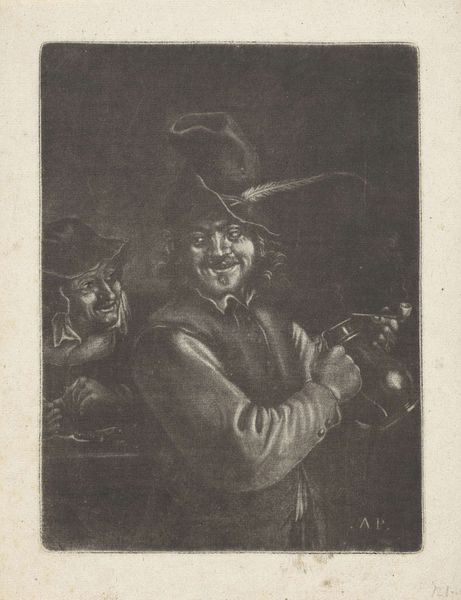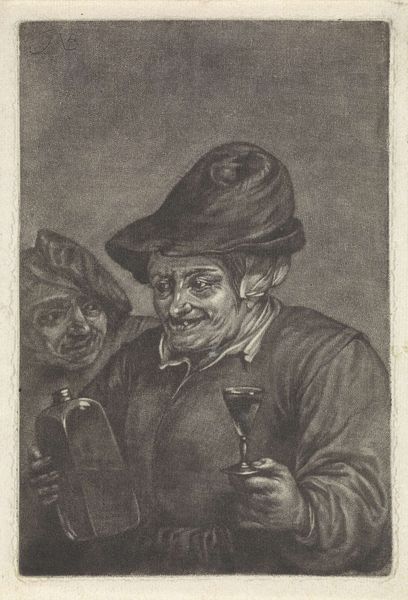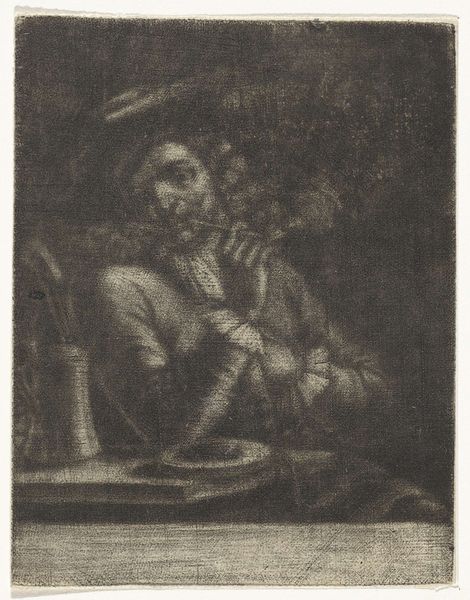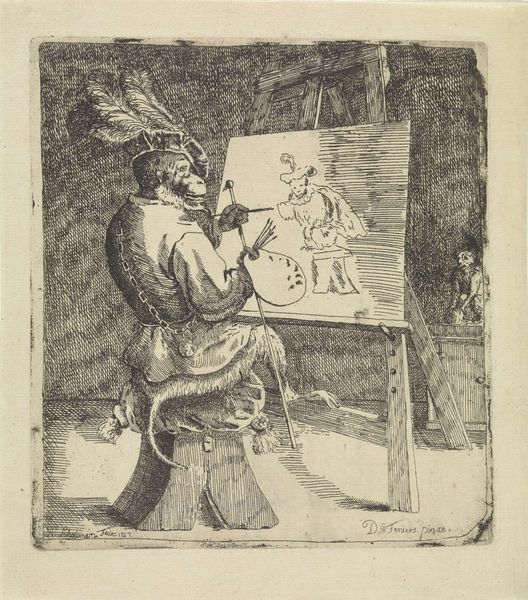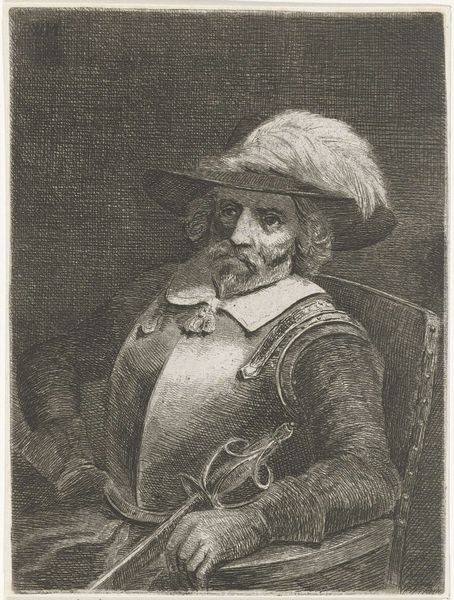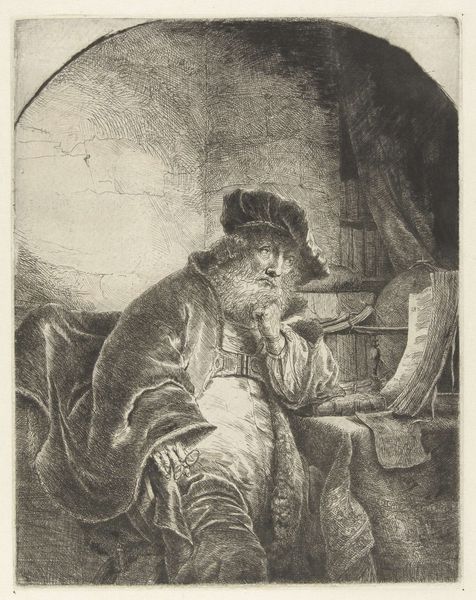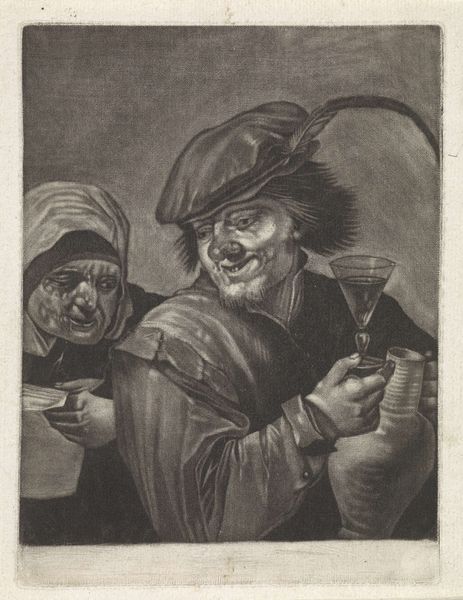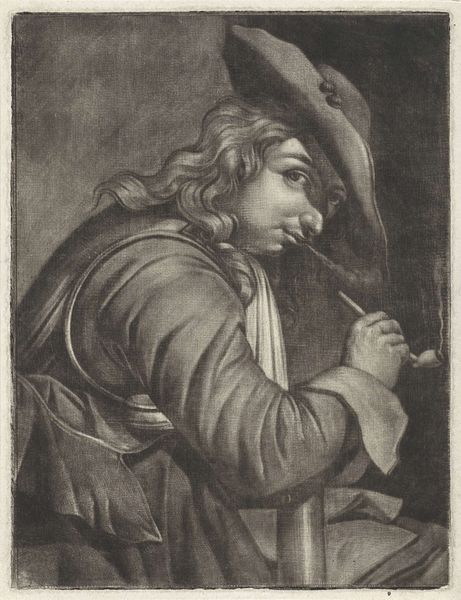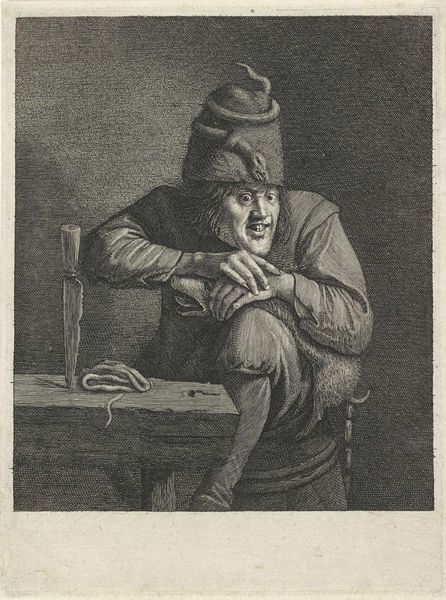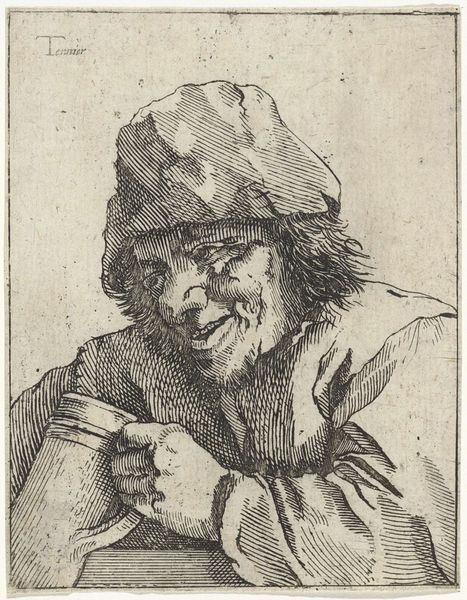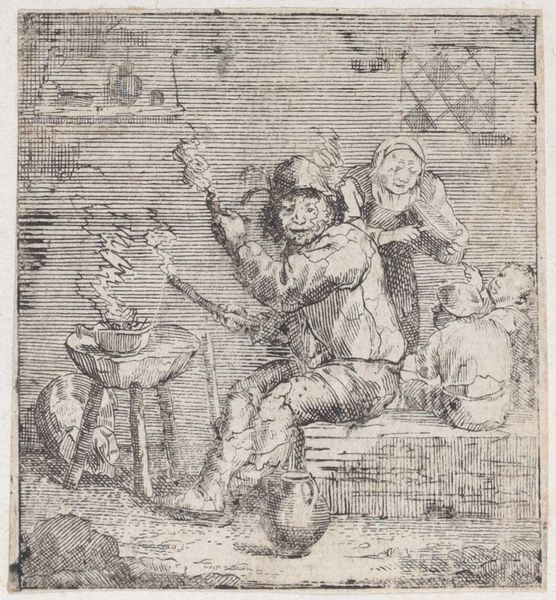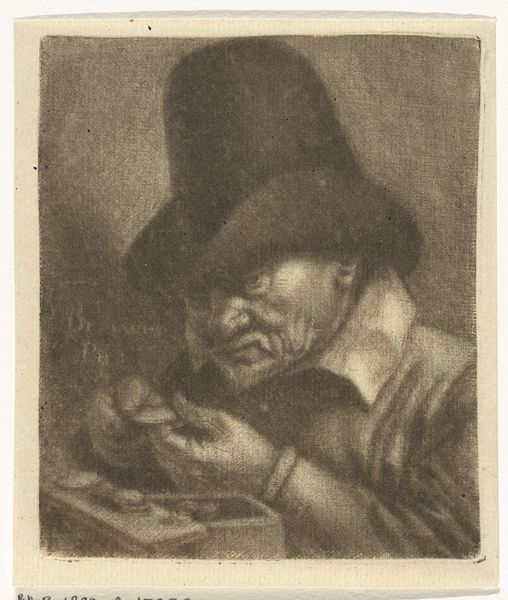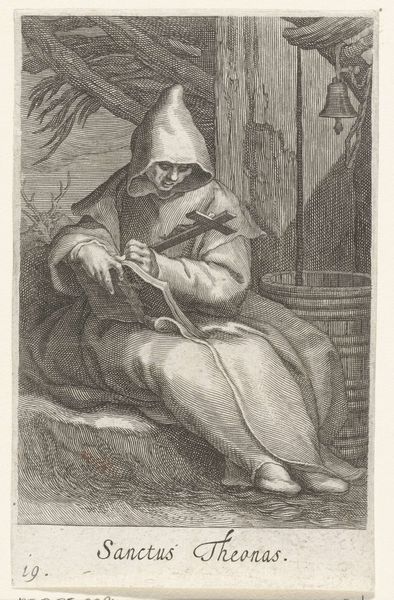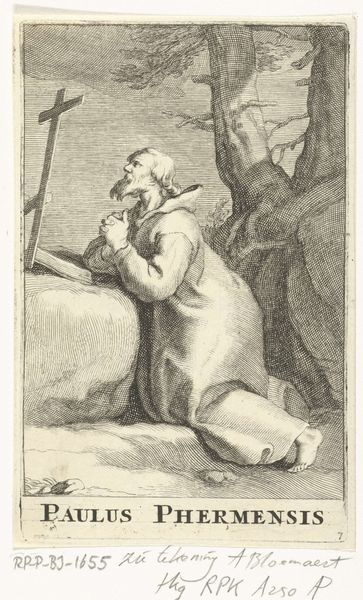
print, etching, engraving
#
portrait
# print
#
etching
#
figuration
#
genre-painting
#
engraving
#
realism
Dimensions: height 167 mm, width 127 mm
Copyright: Rijks Museum: Open Domain
Conrad Lauwers made this print, Gezicht, using etching, sometime in the 17th century. The incised lines create a compelling texture that brings the image to life. The process would have involved coating a metal plate with wax, then carefully drawing through it with a sharp needle to expose the metal. The plate was then submerged in acid, which bit into the exposed lines, creating grooves that would hold ink. Looking closely, you can see the intricate network of lines that define the figure’s face, clothing, and the surrounding landscape. Lauwers’ expertise in etching is evident in the way he uses line thickness and density to create a sense of depth and volume. The image is rich with cultural significance. The way the figure is depicted – his dress, the object he holds, and the landscape – all contribute to the story of the artwork. Considering the material and processes employed, it encourages us to look beyond the image itself. It invites us to consider the relationship between art, skill, and the stories that materials can tell.
Comments
No comments
Be the first to comment and join the conversation on the ultimate creative platform.
